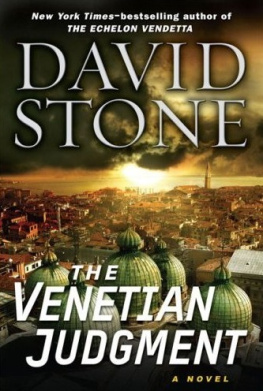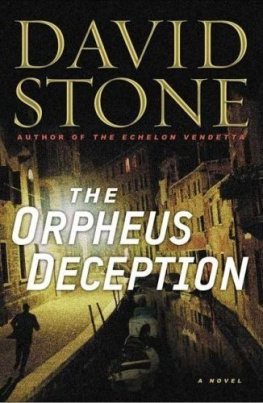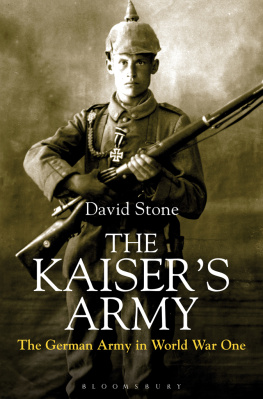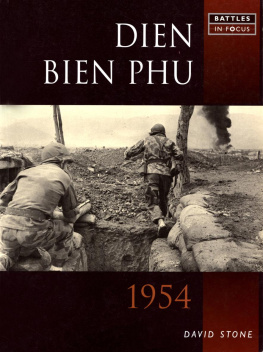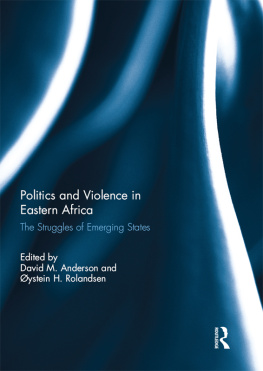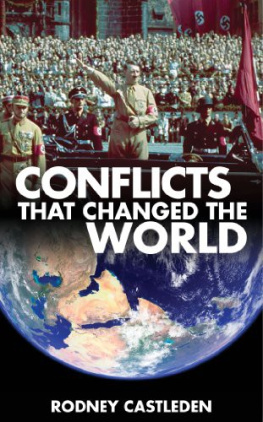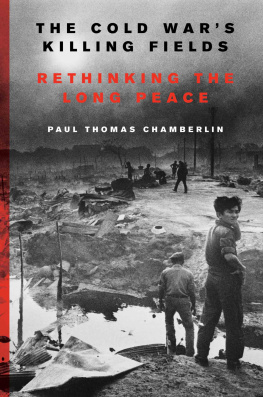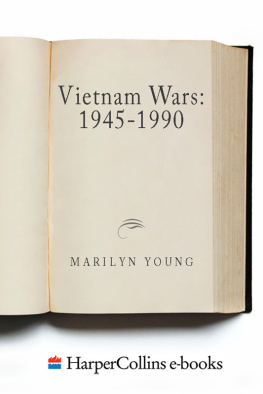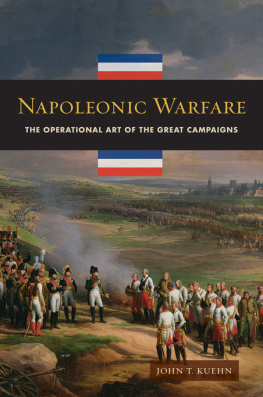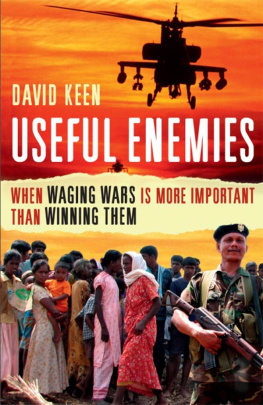AUTHORS NOTE
AND ACKNOWLEDGEMENTS
Very many books have already been written about the Cold War. Some were produced while it was still in progress; not surprisingly, some authors seized the opportunity to publish in the immediate aftermath of the fall of the Berlin Wall in 1989, albeit possibly a little prematurely, given the various turns of events that followed that historic event. These many accounts and analyses of the Cold War have included the full range of eyewitness accounts, biographies, autobiographies, and academic and strategic works at all levels of detail and from various perspectives. Several of these have been learned, informed and highly thought-provoking. Inevitably, the authors of a majority of these accounts are the international statesmen, politicians, academics and senior military commanders for whom the Cold War was their war, and whose knowledge of the ebb and flow of its actions and conflicts was based upon first-hand knowledge, personal involvement and vivid recollection. For the student or reader who seeks to know about the detail of the international relationships, strategy and politics of the Cold War era there are thus many such sources upon which he or she may draw. However, the use of these works does provoke a note of caution, as those involved in the development and implementation of such strategic and political decisions will inevitably even if entirely unintentionally colour their perspective of events in their own favour. To do so is human nature and the top down recording of history has ever been such. Also, the majority of these works have not surprisingly approached the subject from the authors particular area of interest or involvement; or (as is so with many of the Cold War analyses by academics) by a broad history of the Cold War in all its aspects. Inevitably, the latter approach, whilst usually informative and full of facts, does on occasion lose sight of the human element of a war that although undeclared was nevertheless a conflict in which very many human beings, civilians and soldiers, sailors and airmen alike, died in combat across the world.
Wars of the Cold War does not seek to be a full military history of all aspects of the Cold War the reader who seeks such a text will find it hard to better David Millers excellent functional approach to the subject in The Cold War: A Military History.World War history as the true Cold War, to the exclusion of the peripheral conflicts and limited wars that occurred between 1945 and 1990. However, these lesser conflicts cannot realistically be decoupled from the strategic conflict of the superpowers. Given the existence of such works, Wars of the Cold War seeks neither to duplicate nor to compete directly with them.
The intention in Wars of the Cold War is, therefore, to document, to bring to life and to analyse the proposition that, far from being a period of relative peace, the Cold War deserves a status in the military and political history of the world every bit as important as that accorded to the two World Wars that immediately preceded it, together with the great armed conflicts of previous centuries. This proposition is based primarily upon the perception that the several actual wars, together with the war in waiting in Central Europe, which occurred between 1945 and 1990, were but military campaigns within a wider conflict that was a war in its own right: a war that lasted for almost half a century and was in many respects a modern version of the ideological struggle that raged across Europe from 1618 to 1648, to which history has accorded the title the Thirty Years War. In parallel with this, the author (himself a former Cold War Warrior) seeks to highlight the often extraordinary dedication, professionalism and self-sacrifice of the hundreds of thousands of Cold War warriors of the armed forces on both sides of the political divide. Whether of the communist or non-communist bloc, their contribution to the needs of their countries and their unquestioning response to the direction, and sometimes the whims, of their political leaders has been consigned all too speedily to the past by many of todays political leaders. Arguably this is especially so in Western Europe within those countries that number themselves among the victors of the Cold War where may be found those politicians who today appear all too eager to bask in the reflected glory of the actions of their nations armed forces, and so exploit the high profile, quick fix conflicts of the New World Order for their own political ends. While by no means universal, such actions have diminished the stature of many of todays professional politicians and have tended to confirm that the era of the true statesmen of former times is truly at an end.
From all this it follows that Wars of the Cold War is necessarily selective, and that selectivity inevitably involves an element of personal judgement by an author who lived through the whole Cold War period and was a member of the British Army for the final twenty-five years of that conflict, and for a decade beyond. The work therefore treats the Cold War as a single conflict, whilst focusing upon the related campaigns and crises of the period. Inevitably, the clashes in Korea, Indochina and Vietnam, the Cuban missile crisis, and those members of the armed forces at the front line of the Cold War in Europe attract particular attention. Of the communist insurgencies, that which was defeated by the British in Malaya merits close attention. The failed national uprisings against Soviet rule in East Berlin, Hungary and Czechoslovakia were also key events in the Cold War. Similarly, although they were not direct clashes of arms between West and East, capitalism and communism, the ArabIsraeli conflicts, together with other Middle East wars and the importance of that regions oil supplies, are linked inextricably to the Cold War, and are therefore dealt with as such. This treatment allows a global view to be taken of the subject. Inevitably, however, this approach precludes detailed coverage of much of the high-level political manoeuvring that formed a backdrop to these campaigns. Similarly, where it is assessed that a conflicts linkage to the Cold War is non-existent or tenuous, its non-inclusion or only passing treatment reflects this. It follows that certain lesser conflicts while unquestionably of historical significance in their own right are generally not considered in the detail accorded to the more major Cold War conflicts, except where their progress or outcome bore directly on the global confrontation between East and West. Similarly, the major war that India and Pakistan fought in 1971, which resulted in the creation of Bangladesh, was only of Cold War significance inasmuch as it contributed to assessments of the effectiveness of each sides Western or Soviet-supplied equipment in combat albeit that both India and Pakistan were then in the process of developing their own nuclear capability (although this was at a very early stage in 1971).
Whilst this degree of selectivity may result in the omission of a conflict that another might deem important, the historical context and significance or otherwise of a given conflict or event can be no more than the personal view of the author. Accordingly, it is freely acknowledged that the responsibility for this work, and therefore for any consequent omissions, inaccuracies or misperceptions therein, rests finally and entirely with him. He therefore apologises in advance to any reader who might vainly seek an account of a favourite Cold War era campaign, crisis or conflict within its pages, but which has been omitted or afforded less than full treatment.





